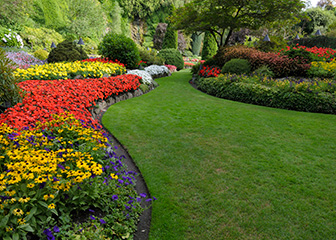
Interns are often supervised by more experienced landscape architects.
Every state requires landscape architects to be licensed. Requirements vary among states, but usually include a degree in landscape architecture from an accredited school, work experience, and a passing score on the Landscape Architect Registration Exam.
Education
A bachelor's or master's degree in landscape architecture usually is necessary for entry into the profession. In 2011, 68 colleges and universities offered undergraduate or graduate programs in landscape architecture that were accredited by the Landscape Architecture Accreditation Board, part of the American Society of Landscape Architects.
There are two undergraduate landscape architect professional degrees: a Bachelor of Landscape Architecture (BLA) and a Bachelor of Science in Landscape Architecture (BSLA). These programs usually require 4 or 5 years of study.
Those who hold an undergraduate degree in a field other than landscape architecture can enroll in a Master of Landscape Architecture (MLA) graduate degree program, which typically takes 3 years of full-time study. Those who hold undergraduate degrees in landscape architecture can earn their MLA in 2 years.
Common courses include surveying, landscape design and construction, landscape ecology, site design, and urban and regional planning. Other courses include history of landscape architecture, plant and soil science, geology, professional practice, and general management.
The design studio is a key component of any curriculum. Whenever possible, students are assigned real projects, providing them with valuable hands-on experience. While working on these projects, students become proficient in the use of computer-aided design (CAD), model building, geographic information systems (GISs), and video simulation.
Many employers recommend that prospective landscape architects complete an internship with a landscape architecture firm during their formal educational studies. Interns can improve their technical skills and gain an understanding of the day-to-day operations of the business, including how to win clients, generate fees, and work within a budget.
Training
New hires are called apprentices or intern landscape architects until they become licensed. Although duties vary with the type and size of the employing firm, all interns must work under the supervision of a licensed landscape architect. In addition, all drawings and specifications must be signed and sealed by the licensed landscape architect.
Licenses and Certification
Landscape architects who work outside of the federal government need a license. As of 2010, all 50 states required landscape architects to be licensed. Licensing is based on the Landscape Architect Registration Examination (L.A.R.E.), which is sponsored by the Council of Landscape Architectural Registration Boards. Candidates can take the L.A.R.E. at different times of the year in two parts—three multiple-choice sections and two graphic response sections.
Applicants who want to take the exam usually need a degree from an accredited school and 1 to 4 years of work experience under the supervision of a licensed landscape architect, although standards vary by state. For those without an accredited landscape architecture degree, most states provide alternative paths to qualify to take the L.A.R.E., usually requiring more work experience.
Currently, 13 states require landscape architects to pass a state exam, in addition to the L.A.R.E., to satisfy registration requirements. State exams focus on laws, environmental regulations, plants, soils, climate, and other characteristics unique to the state.
Because requirements for licensure vary, landscape architects may find it difficult to transfer their registration from one state to another. Common requirements include graduating from an accredited program, serving 3 years of internship under the supervision of a registered landscape architect, and passing the L.A.R.E. By meeting national requirements, a landscape architect also can obtain certification from the Council of Landscape Architectural Registration Boards. That certification can be useful in getting one state to accept a license from another state.
Landscape architects who work for the federal government do not have to be licensed. For federal government jobs, landscape architects should have a bachelor's or master's degree in landscape architecture.
Important Qualities
Analytical skills. Landscape architects need to understand the content of designs. When designing a building’s drainage system, for example, landscape architects need to understand how the building’s location and surrounding land affect each other.
Communication skills. Landscape architects share their ideas, both orally and in writing, with clients, other architects, and workers who help prepare drawings. Many landscape architects also give presentations to explain their designs.
Creativity. Landscape architects create the overall look of gardens, parks, and other outdoor areas. Designs should be both pleasing to the eye and functional.
Critical-thinking skills. When designing outdoor spaces, landscape architects must be able to provide solutions to unanticipated challenges. These solutions often involve looking at the challenge from all perspectives.
Technical skills. Landscape architects use CAD programs to create plans. Some also must use GISs for their designs.
Visualization skills. Landscape architects must be able to imagine how the overall outdoor space will look once complete.














